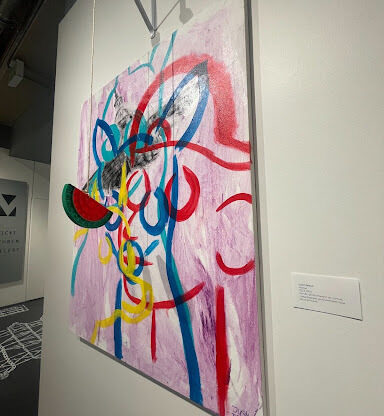University of Denver’s Byron Theater puts on Antigone, an Athenian tragedy written by Greek playwright Sophocles in 441 B.C.E. It is one of his more well-known works and seeks to bring attention to the tragedies that follow war and highlight an individual’s initiative to bring justice to her family.
The production distinguished itself with its strong leading actors, a handmade set that prepares the viewers for the context of the play, unique costume choices and effective sound and light effects.
The main character, Antigone, is played by Jenna Clements. From the very first lines she spoke in the play, it was clear that the actor had established her character as an independent, passionate and outspoken young woman. She plans from the beginning to go against the laws of the new King Creon to bury her brother, Polyneices, because she feels he and the gods are deserving of that level of justice. Clements does a good job developing Antigone’s self-empowerment by demonstrating how unapologetic she is in her actions directly disobeying the law. Her costumes were simple flowy dresses and strappy sandals that effectively reflected the time period and location.
King Creon, who was played by Cooper Atchison, seemed to have been cast perfectly for this role. He manipulated his voice to express superiority over the rest of the cast and demonstrated a capacity for vocal diversity when the emotions and incentives behind his lines varied. He wore a white suit under a royal gown with silver and gold accents, as well as a simple gold crown that suited his character perfectly. His costume only changed after the tragedy of his son’s death, when he was no longer wearing the royal getup; instead of gold, he had a red button-up underneath his suit that represented the familial losses he experienced.
Ismene is Antigone’s sister, who is also mourning their brother’s death, but refuses to help Antigone bury Polyneices for fear of breaking the law. She was played by Hannah Girgis, who did a great job setting the scene with her expressions, posture, and the way she held herself. Her first costume was a well-chosen layering of multiple flowy blue articles of clothing with sandals, but her second one almost seemed like she was on her way to the gym. She was wearing leggings, sneakers, and a zip-up sweater- clothes that definitely weren’t commonplace in 441 B.C.E.
Ryan Thomas played the role of the soldier and was later a member of the chorus. It was a small role, but memorable in the context of the play because although his vocal accentuations broke character at some points, he brought a sense of humor to the show with his informal speech and expression.
The king had two guards and an assistant with a clipboard that was corralled behind him at most points in the play. The personality of the two guards seemed strangely distinctive, with one looking a little confused and awkward and the other appearing uninterested and with a monotone voice when his speaking lines came later in the play. It was unclear what the role of the character with the clipboard was and what she was doing with the clipboard the whole time. She seemed to have been mainly ignored as a character until her unexpected but well-performed monologue in the last ten minutes of the show after Creon is no longer in power, where she was mysteriously barefoot.
The acting of the chorus was perhaps the most impressive of the entire performance. They enunciated and projected, and their lines and movement were predominantly unified. There were very few errors and they were all passionate and efficiently spaced throughout the stage in order to not steal attention from the main event of the scenes. There were only a few times where their movements seemed a little too staged or awkward as if they were trying really hard to get the timing right with each other.
While the costumes of the main characters efficiently represented the cultural and historical context of the show, the chorus looked almost as if they were encouraged to come as they were. One member of the chorus was wearing a flannel and a backward baseball cap, another was in a checkered dress, a beret and a leather jacket, one was in a suit, and another was in a mechanic-style button-up with rolled-up sleeves and a baseball cap. For some reason, these outfits just didn’t give ancient Greece, which took away from the contextual clarity.
The set was painted to appear to be made of marble with Greek-style architecture, and certain parts were surrounded by sand, portraying the rubble the village was left in after their civil war. There was also a crack through the entire stage, which was another efficient representation of the state of the post-war city as King Creon aimed to rebuild it. The shadow screen on both sides of the second floor of the set was useful for various parts of the play when a scene was being acted out in the background while it was being discussed in the foreground.
The use of lighting effects was simple: they mainly used the spotlight on the actors, but red mood lighting was used in emotional scenes and the crack through the stage was lit up in the end, aligning with an audible crack of lightning. The sound effects weren’t overdone but were useful in their respective situations. An applause effect was used for the king, wind and stormy noises played during suspenseful and drama-filled parts of the play and emotional background music played in moments of intense speeches that reflected the scene’s sentiments.
The word choice in the performance and the accentuation of particular words generally reflected the time period, but there were a few notable inconsistencies. The use of profanity first by the soldier, then later by the king, misaligned with the proper nature of speech within the play and seemed frankly out of place.
The play overall demonstrated theatrical talent as well as sound and visual operational efficiency. While some costume and stylistic choices poorly reflected the cultural context of the play, DU’s talents for the arts shined through as usual.











